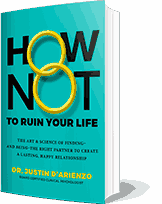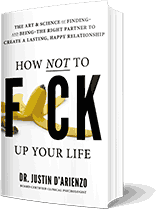- HOME
- PSYCHOLOGICAL SERVICES
- ONLINE COURSES
- Our Partnership Begins When You Purchase an Online Course
- Get to Know Dr. D’Arienzo, Relationship Expert
- Florida Premarital Preparation Online Course
- Georgia Premarital Education Online Course
- TwogetherinTexas Premarital Online Course
- Tennessee Premarital Preparation Online Course
- Minnesota Premarital Education Course Online
- Oklahoma Premarital Counseling Online Course
- South Carolina Premarital Preparation Course
- West Virginia Premarital Education Course
- Online Marriage and Relationship Tune Up Course
- Florida DCF Certified Parent Education and Family Stabilization Online Course
- Georgia Qualified Parent Education and Family Stabilization Online Course
- Texas Qualified Parent Education and Family Stabilization Online Course
- High Conflict Co-Parenting Online Certificate Course (8 Hours)
- Online Anger Management Four Hour Course (Level 1)
- Online Anger Management Eight Hour Course (Level 2)
- Sexual Harassment Online Training
- BUSINESS & PERFORMANCE PSYCHOLOGY
- CLINICAL, COUPLES, & FAMILIES
- ADHD Treatment & Evaluation Services
- Anger Management
- Anxiety Treatment & Evaluation Services
- Borderline Personality Treatment Services
- Cognitive Behavioral Therapy (CBT) Self-Help
- Couples Counseling and Marital Therapy
- Consent for Psychological Services for Minors Post-Divorce
- Depression Treatment Services
- Infidelity Recovery
- Jacksonville Counseling and Psychology
- Military Psychology & Tricare
- Narcissistic Personality Treatment Services
- Online Counseling
- Psychoeducational Testing
- Psychological Testing and Assessment
- Psychotherapy & Counseling
- FORENSIC PSYCHOLOGY & EXPERT TESTIMONY
- LIFE COACHING & EXECUTIVE COACHING
- MMPI TESTING & ASSESSMENT FOR SECURITY AND LEO
- CPI Police and Public Safety Assessment
- G License Psychological Testing
- Online Psychological Testing for Armed Security Guards and Personal Protection Officers
- MMPI Texas Level III CSO and IV PPO Psychological (ONLINE)
- Requirement for Texas Security License Applicants: MMPI Evaluation
- Level 3 Security Guard New Mexico Online MMPI Psychological Evaluation
- PSYCHOLOGICAL PUBLIC DISABILITY QUESTIONNAIRES (DBQ)
- ONLINE COURSES
- TEAM
- D’Arienzo Psychological Group Overview
- Dr. Justin D’Arienzo, Psy.D., ABPP
- Mario Decunto, LMHC
- Dr. Amy Hartley, Ph.D.
- Dr. Erica Janson, Psy.D.
- Alan Lipzin, LMHC
- Cynthia Salameh, Esquire
- Wendy Monger, Tutoring Specialist and Academic Coach
- Dr. Michael Nackashi, Psy.D., Clinical Psychologist
- Joseph Zichi, LCSW
- Mack, Roman and Roxy D’Arienzo
- MERCH & SOCIAL MEDIA
- BOOKS
- APPT REQUEST
Models and Stages of Divorce
Posted by: Dr. Justin D'Arienzo, Psy.D., ABPP
The Emotional Processes of Divorce

If you want to find out more about managing high conflict post divorce or you are divorcing and need help, take our high conflict course. You will learn about the emotional processes and stages of divorce and more.
High Conflict Co-Parenting Course
We also offer a Divorce Course (Parent Education and Family Stabilization Course for Florida, Texas, and Georgia.
Back to the emotional processes of divorce: Did you know that divorce follows similar patterns of grief when losing a loved one to death? Divorce grief is often more complicated given that the person you have lost has not physically died and continues to exist without you intimately. Though, this person as you knew them, has died. You must now rectify the loss of your partner and their influence over your life and children.
The most frequently referred to model of the divorce process is Kubler Ross’s Grief Model (1969). This model compares our response to death to our response to the loss of a marriage. Here are the five stages:
- Denial: Shock and disbelief of the event.
- Anger: Frustration and outpouring of emotions.
- Bargaining: Examining how things may be okay without your partner (this starts in very small doses).
- Depression: Realization that your partner is gone.
- Acceptance: Gaining a sense of relief and willingness to move forward without your partner in your life.
It is key to remember that every divorce is different and every party brings different factors to the relationship during and after the break up. Divorce has other challenges and does not necessarily have to follow the Kubler Ross Model. Similarly to losing someone to death, divorce includes the process of emotional upheaval, chaos, behavioral change, and adjustment with its own nuances.
After working with thousands of divorcing and divorced people, I suggest following a combination of Bohannan’s (1970) and Hagemeyer’s (1986) stage models of divorce. These models best illustrate the challenges a divorcing person experiences as they begin their transformation from being their married to new individual self.
First, lets look at Paul Bohannon’s Model of Divorce:
- Emotional Divorce: You begin to emotionally sperate yourself from your partner (this often occurs for one person before the other is aware).
- Legal Divorce: This is the lawful end of the marriage by Court action (this is only the beginning of one’s journey toward “total divorce”).
- Economic Divorce: You now have two households. You both are likely learning to live differently.
- Co-parental Divorce: This involves negotiating and determining your roles as parents, spending less or more time with your children, and learning to hopefully be a successful parents in a binuclear family.
- Community Divorce: These changes occur within your relationships and friends. You may receive less support from friends and family or begin to feel the push to date again.
- Psychic Divorce: At this point, the stages above are mostly resolved or you have gained more comfort in these areas. You are moving towards independence, being self-supportive, and spending less time in regret or blaming.
Stanley Hagemeyer offers two additional psychosocial phases which eventually need to be resolved during the divorce process.
- Loss of Dreams: The loss of the dream of marriage and having a partner. The loss of ones expectations of marital bliss. The loss of the idea of raising children together, retiring, traveling, and spending time with grandchildren.
- Loss of Physical Accessibility: As the divorce process begins, one partner is no longer present for the other physically, emotionally, and/or sexually. This loss occurs regardless of one’s feelings of attachment to the other.




